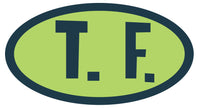
After the Civil War, a great many of the men honored for valor could not read or write. Less than half of Americans were actually literate. A good many of the Westpoint men died in battle–on both sides. For years, Civil War vets were tracked down by word of mouth to award them their medals, and a great many of these men refused them. The suicide rate among veterans of the North and South was astoundingly high; more than any of our other wars. There was no therapy. Post traumatic stress disorder was a century away from even having a name. The vets of the Blue and Gray called it “battle fatigue.”
After the war, many men took to the road, or the rails, hopping freights in such numbers they became a culture of people we now know as hobos. There were 300,000 unemployed men and lots of free transportation. Many looked for work and many more just wandered the country looking for a place to fit in, or call home. One of the ugly byproducts of the war was men discovering they no longer had a place to go home to.
The hobo alphabet was the language these men and women cobbled together; marks, slashes, stick-figures and pictograms left on fences around railroad depots, with which to alert each other as to what was coming their way; if food could be found, if shelter was to be had, if the cops were brutal, if they would be beaten or arrested. . .or worse.
There is anecdotal evidence these symbols have their genesis in cattle brands and battlefield sketches, which would make sense. What has always touched me about this set of symbols is how it united a culture of powerless people; how humans in any dire circumstance find a way to communicate.
As a kid, I was a ceaseless daydreamer, making doodles and odd idiosyncratic drawings while I was supposed to be paying attention in school. They were wildly elaborate and the nuns took to referring to these leaves of absence as going to “Tony World.” I’d make constant, ever-evolving drawings on my school papers; snakes, choppy arrow shapes, blood drops and networks of circles and airplanes and skulls– just whatever and it would make my teachers nuts.
In fourth grade, I had a miserable old bitch named Mrs. Loversky who took special umbrage and used to take my pens away when she was talking, so then I would just daydream without doodling. One time she was running her head about fractions, “blah,blah, blah,” and I was thinking to myself, “Why don’t you just fucking die you old bitch.” Only I wasn’t just thinking it. I’d actually saidit without knowing it until after it was out.
Fuck.
She went mental, waving her big flabby arms over her head like a mental patient, screeching until the nuns came in and had to calm her down. It turned out she had half a load on. Mrs. Loversky used to go to the restaurant at lunch and power down three or four brandy drinks to get through the day. This did not get me out of trouble. The brides of Christ took turns in the hall kicking the holy dogshit out of me. But they sent Mrs. Loversky to the Acorn Academy to dry out for four weeks and when she came back, she never took my pen away again. She told me, “If drawing while I’m talking helps you to learn then go ahead. I’m sorry I yelled at you.” After she did that I felt bad for what I’d said. She was much nicer to me after that and I began to kind of like her and feel bad for her.
I thought of this because of the peace I got as a kid from just drawing nothing in particular, sometimes just filling page after page of my notebook with marks and slashes and shapes and smears and continuous lines that seemed to hypnotize me while I made them. Etching entreats that same kind of sublime feeling for me; mark-making for the joy and curiosity of mark-making, letting my subconsious out to walk around and guide me a bit.
When I first stopped making etchings eight years ago, one of my fears was that they’d gotten a bit “pretty”–that the grit and grime had filtered out. Not to worry here. This one has grit and grime to burn. I had a lot going through my head when I made it. The hobo, the battlefield, the men without language making marks with which to communicate, the boy lost in his lines and wanting to stay lost.
This is a new 5-color etching. It is for sale. Let me know if you would like one.
